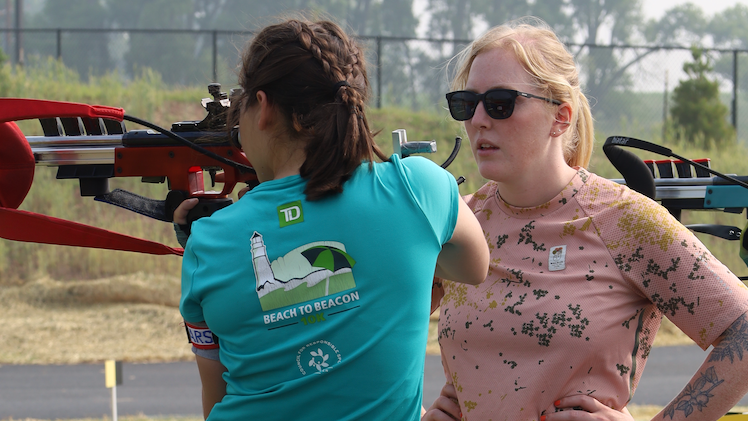On December 16th, the Swedish tabloid Expressen reported that doping materials had been found in a trashcan at the Scandic Hotel in Ostersund, where the Russian, Belorussian, and German biathlon teams had stayed during the opening week of World Cup competition.
While a number of officials tried to dismiss the report as sensationalist, as the days went by it became clear that the Swedish police were investigating the matter. Other news sources, such as Germany’s Zeit newspaper and Norway’s TV 2, picked up the story as well.
However, police remain tight-lipped about the matter, so only a few details are emerging.
How Did They Find It, and What Is “It”?

Patrik Jemteborn, the Information and Public Relations Director for the Ostersund Organizing Committee, confirmed the assertions in Expressen’s original story.
“Yes, those nations stayed at the hotel,” he told FasterSkier in an e-mail. “However neither we, nor the police, nor the hotel, nor anyone knows when the small bottles of drugs were thrown in the waste baskets. That is very important. And it’s also important that no one knows who threw it there.”
According to Jemteborn, the vials have been sent to the National Laboratory of Forensic Science in Linkoping, where their contents will be determined.
“After that, we’ll know if it is something that might be illegal or not,” he said. “We are updating the International Biathlon Union (IBU) about the police investigation. Neither the IBU nor we in Sweden will comment at this time. First, we need to know what this is. Then, after the tests are back, we can see if there might be a connection to our sport.”
A spokesperson for the Jamtland county police force told FasterSkier that he was not familiar with the investigation, and didn’t know anything other than what he had read in the papers.
However, various news sources have leaked further details. Police reportedly told Handelsblatt, a business newspaper published in Dusseldorf, Germany, that the lab would take a month to test the samples.
And Expressen later reported that testosterone, feroglobin, and cortisol were found in the bag, which it claimed was labeled in Russian. However, with the police force declining or unable to comment on the investigation, these allegations cannot be confirmed.
The timing of the finds doesn’t make a lot of sense. According to Expressen, hotel staff called the police on the evening of December 15th to report a suspicious package and bottles containing doping materials. However, the Ostersund World Cup finished on December 5th, and all of the national teams had left soon after. In addition, Handelsblatt reported that it was no longer known in what room, or even on what floor, the staff had found the package.
In a phone conversation, Gabi Kneisz, the secretary for the German biathlon team, said that they had not been contacted as part of the investigation.
Is It Illegal?
Part of the reason that the Swedish police may be tight-lipped about the investigation is that the possession of performance-enhancing drugs is a serious crime in Sweden.
Unlike many other countries in Western Europe, Sweden has a restrictive, zero-tolerance drug policy. The National Alcohol and Drug Action Plan, passed in 2002, states that “the objective of the Swedish drug policy should continue to be a drug-free society.”
The Swedish Act Prohibiting Certain Doping Substances, signed into law in 1991, divides performance-enhancing drugs into four categories: anabolic steroids, testosterone and its derivatives, growth hormones, and other substances which increase the production of testosterone, growth hormones, or any of their derivatives.
Other than for “medicinal or scientific purposes”, these drugs can’t be brought into the country, much less produced, sold, or used, and the penalty for possession of performance-enhancing drugs is up to two years in jail.
So regardless of whether any doping was actually happening, or how the IBU or the World Anti-Doping Agency feels about the situation, the police will be able to prosecute if they can just discover the origin of the drugs. And if testosterone was one of the substances in question, as reported, then the owner of the bag could get a chance to try out Sweden’s prison system.
What About The Drugs?
While it’s impossible to tell at this point whether Expressen’s reports are accurate, if testosterone and cortisol were in the bag, then this could develop into a serious doping case (feroglobin is merely a cocktail of vitamins and amino acids designed to increase hemoglobin).
Testosterone is one of the most commonly-used doping drugs, and was made famous when Floyd Landis tested positive in the 2006 Tour de France; 100 meter world record holder Justin Gatlin tested positive the same year. The hormone builds muscle mass and aids recovery from injury.
So testosterone isn’t a surprising find, and would lead to a ban if a biathlete tested positive. But what about cortisol?

It’s a much less common – and potentially more dangerous – drug. Cortisol, alternately termed a steroid hormone, a stress hormone, or simply a glucocorticoid, is produced naturally by the adrenal gland in response to stress.
Cortisol has a number of different and complex effects on the body. It promotes the production of glucose as well as making adipose tissue and resting muscles to become resistant to insulin, both of which have the effect of increasing the amount of glucose in the blood, available for use by working muscles.
It also stimulates the breakdown of fatty acids and proteins, which are used as energy – but these proteins are taken from resting muscles, so it’s a bad long-term plan. Elevated cortisol levels often make a person feel euphoric and, because it is anti-inflammatory, free of aches and pains. But high levels of cortisol also lead to suppression of the immune system.
In short, if the body naturally produces a lot of cortisol in response to a stressful situation, it maintains brain function and working muscles at the expense of the rest of the body. Cortisol could be a useful doping tool, but only if managed very carefully.
Glucocorticoids are categorically banned by WADA, although cortisol is not mentioned specifically.
The Big Picture
It will likely be quite some time before the investigation in Ostersund concludes. Even if the police know more than they are letting on – which is likely – linking a bag of discarded vials to one of the three national teams will be a challenge.
And prosecuting the doping violations could be difficult, too. Cases with “non-analytical positives”, or violations which are based on possession, eyewitness reports, or other evidence, aren’t as straightforward as those based on positive test results. Non-analytical cases are not uncommon, though; the U.S. Anti-Doping Agency has sanctioned eight athletes in 2010 using that technique.
The complexity of these investigations has been illustrated by the confusing case against Russian skier Nikolai Pankratov, who is still under a provisional ban until a verdict is passed on whether his possession of butterfly needles and tubing constitutes equipment for transfusions.
However, U.S. Biathlon Association President and CEO Max Cobb says that the police, and anti-doping agencies, had better get used to these sorts of cases.
“My personal feeling is that this is the way we’re going to catch dopers in the future more and more,” he told FasterSkier in a phone conversation. “It will be without knowing exactly what we’re looking for or who we should be checking most carefully, because it’s going to be difficult to find the right tests.
“This kind of investigation is helpful,” he continued. “I hope there isn’t a case of doping in biathlon, but it’s good that these things are followed up on.”




One comment
karlgranroth
January 4, 2011 at 6:29 pm
Great Article! quite a bit of research and well appreciated. The comments on cortisol being used possibly as an ergogenic are timely, as it always has and will be a game of being one step ahead by those who choose to dope.
Although it’s somewhat possible a coach is using the testosterone, as it’s pretty common for coaches to be in the same middle age range where many patients are asking for this, it most likely is not.
It’s not uncommon for many US male patients in their 50’s to ask their primary care physician for testosterone claiming lack of virility and fatigue. It’s controversial for many primary care docs, as a drop even on testing is not all that abnormal. However, there is strong anecdotal evidence by patients that they feel better, and not even necessarily from an athletic basis. Thus, in many countries where it’s very easy to acquire testosterone, there is no doubt that many men in their middle years just take it without a doctor’s rx. Thus, it is possible that this is a case of a coach using it, but as you mention, even that is illegal in Sweden if without a Rx.
Good Article!